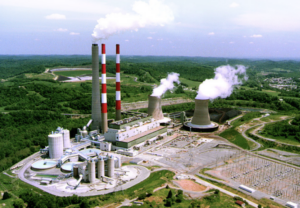Economic and environmental developments markedly affected electricity markets in 2009, driving generation down 4.1% to 3,950 million MWh from 4,119 million MWh in 2008—the lowest level since 2003 and the largest decline in six decades, the U.S. Energy Information Agency (EIA) said in its recently released “Electric Power Annual” report.
The report, “Electric Power Industry 2009: Year in Review,” noted that a drop in power demand reflected a 2.6% decline in economic activity during 2009. Other considerations were that industrial demand for electricity in 2009 fell 9.1% (the lowest since 1987) while mild summer temperatures resulted in a 1.1% decline in residential power sales.
According to the EIA, policy debate over greenhouse gas legislation and “expectations that some form of future cap on carbon dioxide loomed on the horizon” may have affected electric power plant investment and operation decisions.
Nevertheless, the EIA said, CO2, nitrogen oxides (NOx,) and sulfur dioxide (SO2) emissions posted the largest declines on record. Total CO2 emissions were 8.6% lower in 2009. Emissions from coal-fired plants fell 11.0%, largely attributable to a 10.3% decline in coal consumption. NOx and SO2 emissions from electric power plants declined 28.1% and 23.8%. For coal-fired generation, the declines in NOx and SO2 emissions were even greater, at 34% and 24.7%, respectively.
Coal Generation Plunged, Natural Gas Generation Surged
As the prices of natural gas fell to roughly half the 2008 level in 2009, and with the cost of coal rising 6.8% (between 2000 and 2009, coal prices to electric power plants rose 84%, the EIA claims), coal-to-gas switching increased in 2009, especially in the Southeast. “Nationwide, coal-fired electric power generation declined 11.6% from 2008 to 2009, bringing coal’s share of the electricity power output to 44.5%, the lowest level since 1978,” the federal body said. “Coal consumption at U.S. power plants paralleled the decline in generation, dropping 10.3% from 2008.”
In contrast, natural gas-fired generation increased 4.3% in 2009, despite the 4.1% decline in overall electric generation. The natural gas share of generation increased to 23.3%—the highest level since 1970. Electricity’s share of total U.S. natural gas consumption has also risen rapidly, growing from 17% in 1996 to over 30% in 2009, the EIA said.
Two Steps Forward for Wind and Hydro, a Step Back for Nuclear
Wind power also grew in 2009, increasing 33.5% over 2008, bringing the share of total generation to 1.9%. This followed year-over-year generation gains of 60.7% in 2008, 29.6% in 2007, and 49.3% in 2006. Wind capacity in 2009 totaled 34,296 MW, as compared to 24,651 MW in 2008.
Nuclear power generation, however accounted for 20.2% of the electricity generated in 2009, a 0.9% decrease from the prior year. “The decline in nuclear generation in 2009 is the result of scheduled and unscheduled plant outages and derates,” the EIA said.
Overall, generation from conventional hydro plants (exclusive of pumped storage) increased 7.3% from 2008 to 2009. “The western States were still suffering from a prolonged drought during 2009. The Bonneville Power Administration, which is the largest producer of hydroelectric power in the west, reported reduced runoff for the January through July 2009 period as compared to the same period in 2008,” said the EIA.
“In contrast, many eastern States experienced record rainfall: Alabama, Georgia, Kentucky, North Carolina, and Tennessee all reported substantial gains in hydro generation in 2009. The Tennessee Valley Authority cited better water conditions, resulting in a 71% increase in hydropower during 2009.”
Source: EIA, POWERnews







